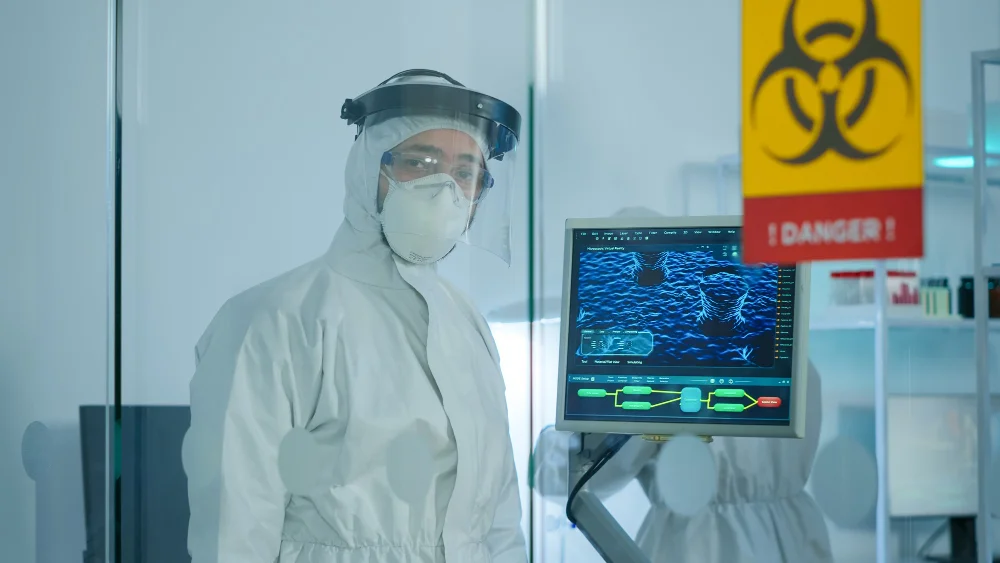
- devpneucleus
- Jul 31, 2025
- Blog
Precision gas flow instrumentation is essential in industries that depend on accuracy, reliability, and stability. Whether used in semiconductor fabrication, environmental testing, or pharmaceutical production, these systems must operate without error in highly sensitive environments. One critical factor that often affects the performance of such instrumentation is electromagnetic interference.
RF immunity refers to the ability of an electronic device or system to resist or function properly in the presence of radio frequency disturbances. For gas flow instruments, this attribute is not optional. It is a requirement that directly impacts accuracy and safety.
Why RF Immunity Matters in Gas Flow Systems
Modern gas flow instruments rely on electronic sensors, control loops, and microprocessors to measure and regulate flow. These components can be vulnerable to electromagnetic interference generated by nearby devices or transmitted through cables and connectors. If not properly shielded or tested, even a low level of interference can cause incorrect readings, unstable flow, or complete system failure.
In high-precision environments, even the slightest fluctuation in flow control can lead to batch contamination, product defects, or compromised research outcomes. RF interference can corrupt digital signals, overload analog circuits, or disrupt timing within embedded controllers. As a result, ensuring RF immunity becomes a critical part of the design, testing, and validation of gas flow systems.
What Is Conducted RF Immunity
Conducted RF immunity refers to a system’s ability to resist radio frequency signals that enter through cables, wires, or electrical connections. This form of interference is usually generated by nearby equipment, switching power supplies, or industrial machinery. The interference travels through the power lines or signal paths connected to the instrumentation.
A conducted RF immunity test evaluates how well a system performs when subjected to RF disturbances injected into its conductors. During testing, standard methods are used to simulate real-world interference. The goal is to confirm that the gas flow instrument can maintain accurate readings and continue stable operation while exposed to known RF conditions.
Testing typically involves frequencies ranging from a few kilohertz to hundreds of megahertz. Standards such as IEC 61000-4-6 provide guidelines for performing these tests, including signal levels, duration, and measurement tolerances.
Understanding Radiated RF Immunity
Radiated RF immunity measures a system’s ability to operate correctly when exposed to electromagnetic fields transmitted through the air. These fields can come from mobile phones, Wi-Fi routers, industrial transmitters, or other wireless equipment. Unlike conducted RF signals that enter through physical connections, radiated RF signals penetrate the device enclosure or affect exposed components.
Instruments used in open environments or in proximity to other wireless systems must be designed to resist this form of interference. A radiated RF immunity test involves placing the device inside an electromagnetic test chamber and subjecting it to RF fields at various frequencies and power levels. This ensures that the instrument performs consistently and without disruption during real-world exposure to RF energy.
The test range commonly extends from 80 MHz to 6 GHz depending on the application. Critical performance parameters such as flow accuracy, response time, and signal integrity are monitored during exposure. Test results are used to validate the design and qualify the system for use in electromagnetic environments.
Common Sources of RF Interference in Industrial Environments
Precision gas flow instruments are often deployed in environments where electromagnetic noise is unavoidable. Some common sources include:
- Variable frequency drives used in motors and pumps
- Industrial radios and wireless sensors
- High-voltage equipment such as welders or plasma generators
- Communication systems like cellular networks and walkie-talkies
- Computers and control panels operating in close proximity
Without proper shielding and immunity measures, these RF sources can interfere with the function of sensitive instrumentation. As a result, rigorous testing for RF immunity is essential before deployment.
Design Considerations for Improved RF Immunity
Developers of gas flow instrumentation must consider electromagnetic compatibility from the early stages of design. Effective techniques include:
- Shielded cables and connectors to reduce signal coupling
- Filtering components at power and signal inputs to block unwanted frequencies
- PCB layout strategies that minimize antenna-like structures
- Use of metal enclosures to prevent radiated energy from reaching internal circuits
- Grounding methods that eliminate noise loops and potential differences
These strategies support both conducted RF immunity and radiated RF immunity by reducing the pathways through which interference can reach critical systems. Combining design best practices with formal testing ensures that gas flow instruments maintain their accuracy and reliability in the field.
Testing Standards and Industry Requirements
Several international standards govern how RF immunity is tested and certified. These include:
- IEC 61000-4-3 for radiated RF immunity
- IEC 61000-4-6 for conducted RF immunity test
- CISPR and EN series standards for emission and immunity compliance
Meeting these standards is often a requirement for CE marking, FDA approvals, or other regulatory certifications. For industries that operate in controlled environments or near critical systems, verified RF immunity is essential to maintaining process integrity and safety.
The Future of RF Immunity in Instrumentation
As industrial and research environments become more connected and dependent on wireless communication, the potential for RF interference will continue to grow. The use of 5G networks, IoT sensors, and high-speed electronics increases the complexity of managing electromagnetic compatibility.
Future gas flow systems must be designed not only for accuracy and performance but also for resilience in noisy environments. RF immunity will remain a key factor in ensuring reliability, especially as flow systems become more compact, digital, and interconnected.
Manufacturers and developers who prioritize RF compatibility will be better prepared to deliver systems that operate with precision, regardless of surrounding interference.
